Introducing Cloudflare for Teams

Ten years ago, when Cloudflare was created, the Internet was a place that people visited. People still talked about ‘surfing the web’ and the iPhone was less than two years old, but on July 4, 2009 large scale DDoS attacks were launched against websites in the US and South Korea.
Those attacks highlighted how fragile the Internet was and how all of us were becoming dependent on access to the web as part of our daily lives.
Fast forward ten years and the speed, reliability and safety of the Internet is paramount as our private and work lives depend on it.
We started Cloudflare to solve one half of every IT organization's challenge: how do you ensure the resources and infrastructure that you expose to the Internet are safe from attack, fast, and reliable. We saw that the world was moving away from hardware and software to solve these problems and instead wanted a scalable service that would work around the world.
To deliver that, we built one of the world's largest networks. Today our network spans more than 200 cities worldwide and is within milliseconds of nearly everyone connected to the Internet. We have built the capacity to stand Continue reading
Security on the Internet with Cloudflare for Teams

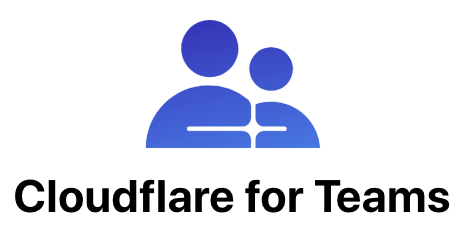
Your experience using the Internet has continued to improve over time. It’s gotten faster, safer, and more reliable. However, you probably have to use a different, worse, equivalent of it when you do your work. While the Internet kept getting better, businesses and their employees were stuck using their own private networks.
In those networks, teams hosted their own applications, stored their own data, and protected all of it by building a castle and moat around that private world. This model hid internally managed resources behind VPN appliances and on-premise firewall hardware. The experience was awful, for users and administrators alike. While the rest of the Internet became more performant and more reliable, business users were stuck in an alternate universe.
That legacy approach was less secure and slower than teams wanted, but the corporate perimeter mostly worked for a time. However, that began to fall apart with the rise of cloud-delivered applications. Businesses migrated to SaaS versions of software that previously lived in that castle and behind that moat. Users needed to connect to the public Internet to do their jobs, and attackers made the Internet unsafe in sophisticated, unpredictable ways - which opened up every business to a Continue reading
Cloudflare + Remote Browser Isolation
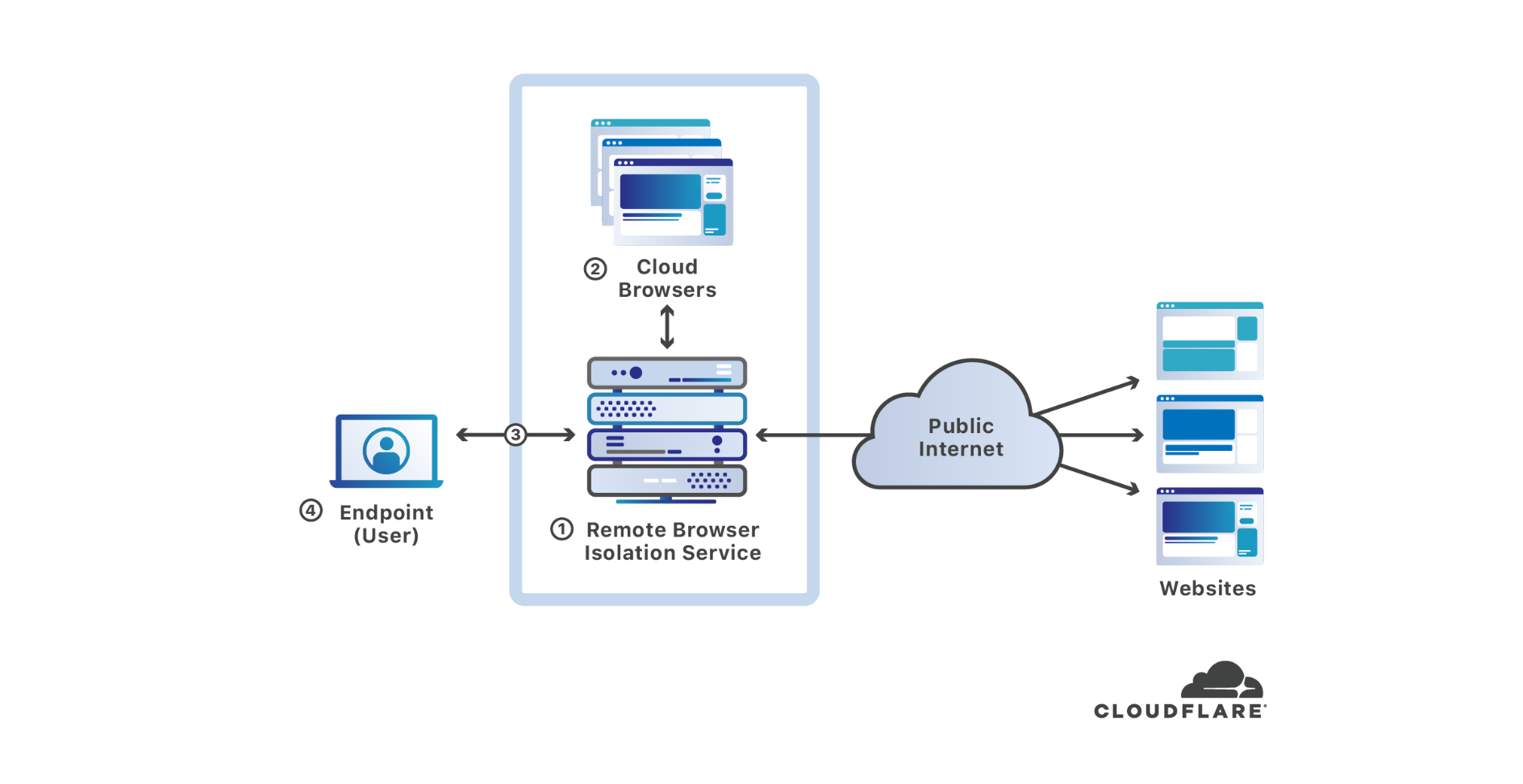
Cloudflare announced today that it has purchased S2 Systems Corporation, a Seattle-area startup that has built an innovative remote browser isolation solution unlike any other currently in the market. The majority of endpoint compromises involve web browsers — by putting space between users’ devices and where web code executes, browser isolation makes endpoints substantially more secure. In this blog post, I’ll discuss what browser isolation is, why it is important, how the S2 Systems cloud browser works, and how it fits with Cloudflare’s mission to help build a better Internet.
What’s wrong with web browsing?
It’s been more than 30 years since Tim Berners-Lee wrote the project proposal defining the technology underlying what we now call the world wide web. What Berners-Lee envisioned as being useful for “several thousand people, many of them very creative, all working toward common goals”[1] has grown to become a fundamental part of commerce, business, the global economy, and an integral part of society used by more than 58% of the world’s population[2].
The world wide web and web browsers have unequivocally become the platform for much of the productive work (and play) people do every day. However, as the pervasiveness Continue reading
Cloudflare Expanded to 200 Cities in 2019
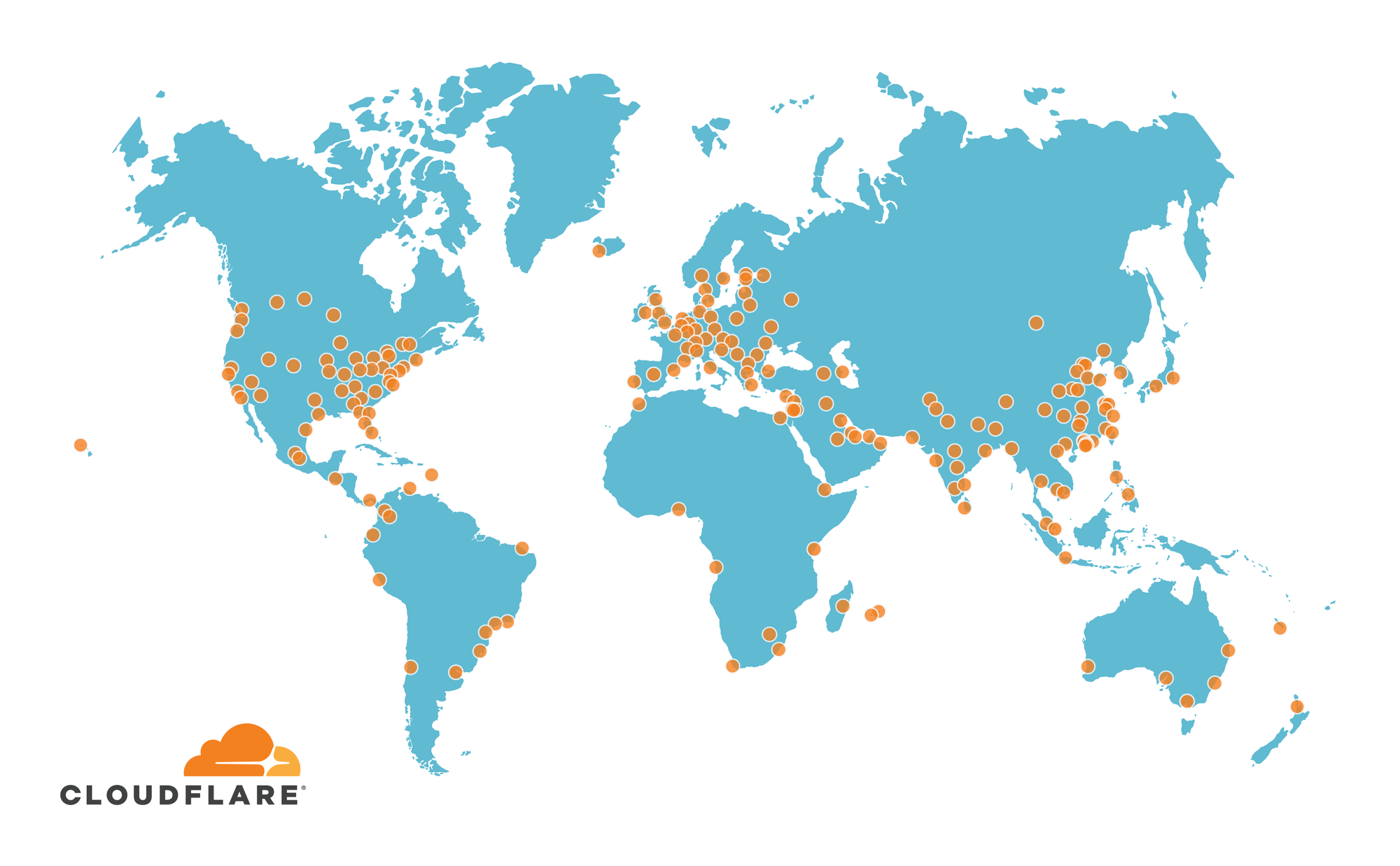
We have exciting news: Cloudflare closed out the decade by reaching our 200th city* across 90+ countries. Each new location increases the security, performance, and reliability of the 20-million-plus Internet properties on our network. Over the last quarter, we turned up seven data centers spanning from Chattogram, Bangladesh all the way to the Hawaiian Islands:
- Chattogram & Dhaka, Bangladesh. These data centers are our first in Bangladesh, ensuring that its 161 million residents will have a better experience on our network.
- Honolulu, Hawaii, USA. Honolulu is one of the most remote cities in the world; with our Honolulu data center up and running, Hawaiian visitors can be served 2,400 miles closer than ever before! Hawaii is a hub for many submarine cables in the Pacific, meaning that some Pacific Islands will also see significant improvements.
- Adelaide, Australia. Our 7th Australasian data center can be found “down under” in the capital of South Australia. Despite being Australia’s fifth-largest city, Adelaide is often overlooked for Australian interconnection. We, for one, are happy to establish a presence in it and its unique UTC+9:30 time zone!
- Thimphu, Bhutan. Bhutan is the seventh SAARC (South Asian Association for Regional Cooperation) country Continue reading
Adopting a new approach to HTTP prioritization
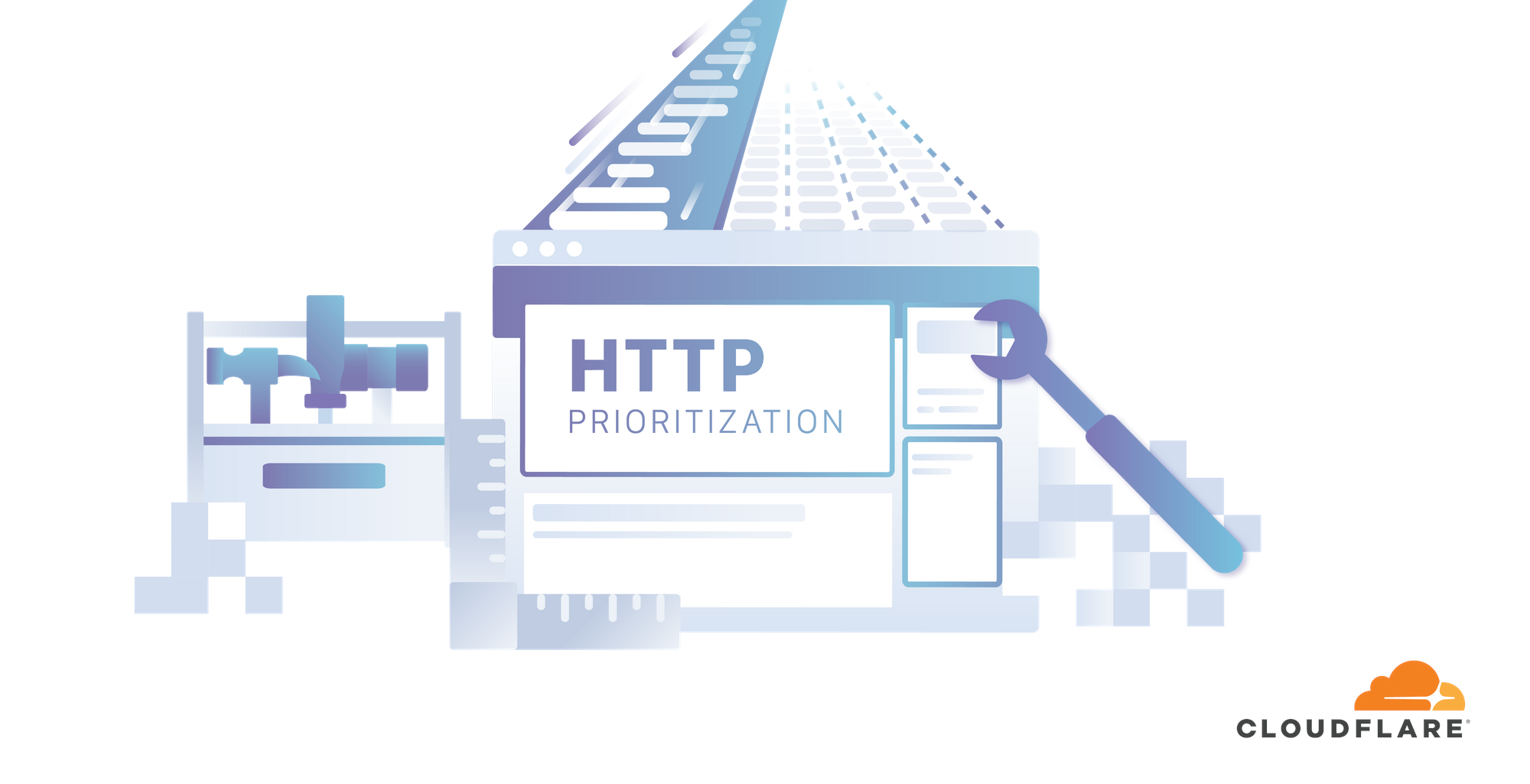
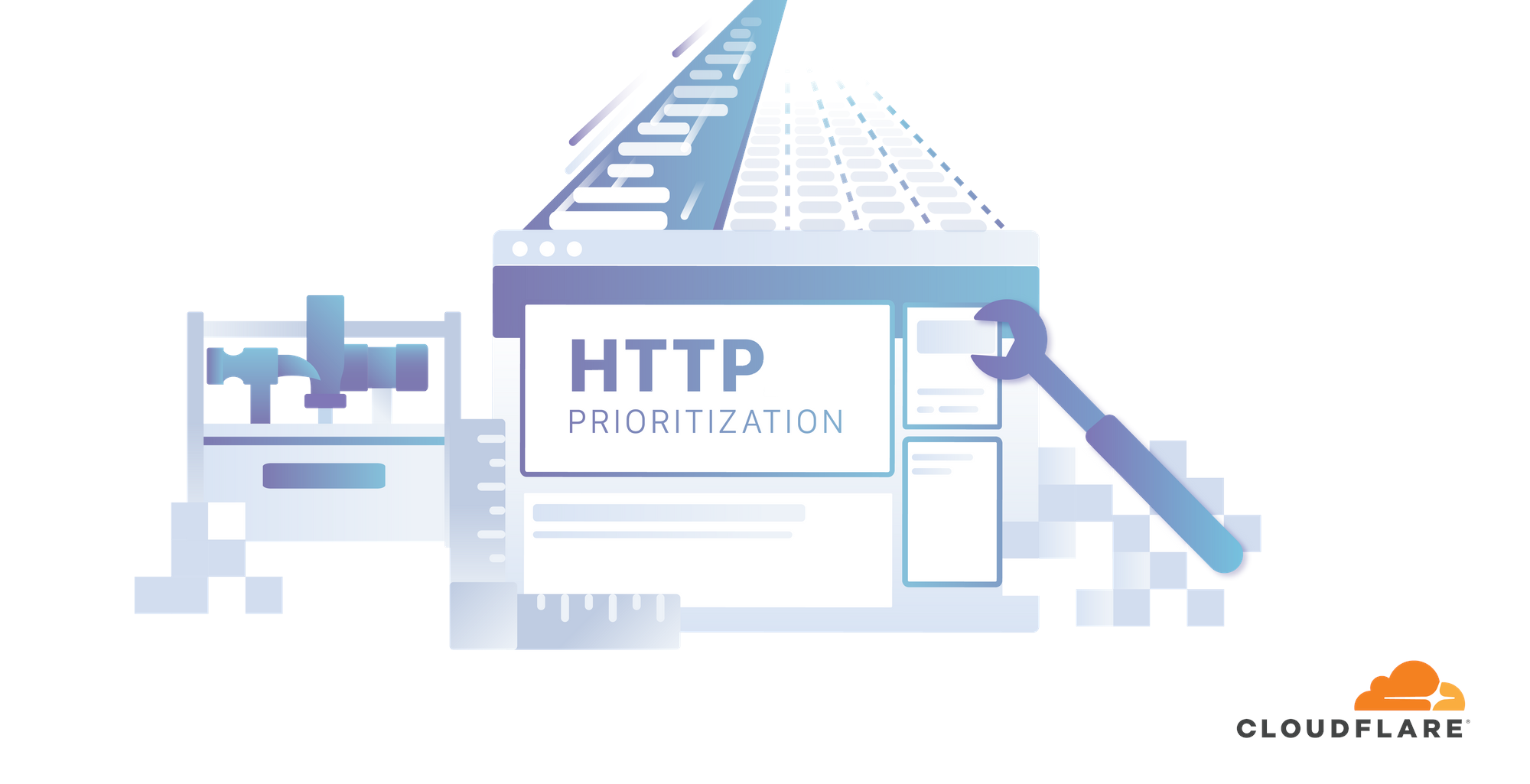
Friday the 13th is a lucky day for Cloudflare for many reasons. On December 13, 2019 Tommy Pauly, co-chair of the IETF HTTP Working Group, announced the adoption of the "Extensible Prioritization Scheme for HTTP" - a new approach to HTTP prioritization.
Web pages are made up of many resources that must be downloaded before they can be presented to the user. The role of HTTP prioritization is to load the right bytes at the right time in order to achieve the best performance. This is a collaborative process between client and server, a client sends priority signals that the server can use to schedule the delivery of response data. In HTTP/1.1 the signal is basic, clients order requests smartly across a pool of about 6 connections. In HTTP/2 a single connection is used and clients send a signal per request, as a frame, which describes the relative dependency and weighting of the response. HTTP/3 tried to use the same approach but dependencies don't work well when signals can be delivered out of order.
HTTP/3 is being standardised as part of the QUIC effort. As a Working Group (WG) we've been trying to fix the problems that non-deterministic ordering Continue reading
Happy Holidays!

I joined Cloudflare in July of 2019, but I've known of Cloudflare for years. I always read the blog posts and looked at the way the company was engaging with the community. I also noticed the diversity in the names of many of the blog post authors.
There are over 50 languages spoken at Cloudflare, as we have natives from many countries on our team, with different backgrounds, religions, gender and cultures. And it is this diversity that makes us a great team.
A few days ago I asked one of my colleagues how he would say "Happy Holidays!" in Arabic. When I heard him say it, I instantly got the idea of recording a video in as many languages as possible of our colleagues wishing all of you, our readers and customers, a happy winter season.
It only took one internal message for people to start responding and sending their videos to me. Some did it themselves, others flocked in a meeting room and helped each other record their greeting. It took a few days and some video editing to put together an informal video that was entirely done by the team, to wish you all the best Continue reading
Top 10 Money Moves of 2019 in SDxCentral’s World
Broadcom paid $10.7B for Symantec; Cisco bought Acacia Communications for $2.6B; plus 2019's...
This holiday’s biggest online shopping day was… Black Friday
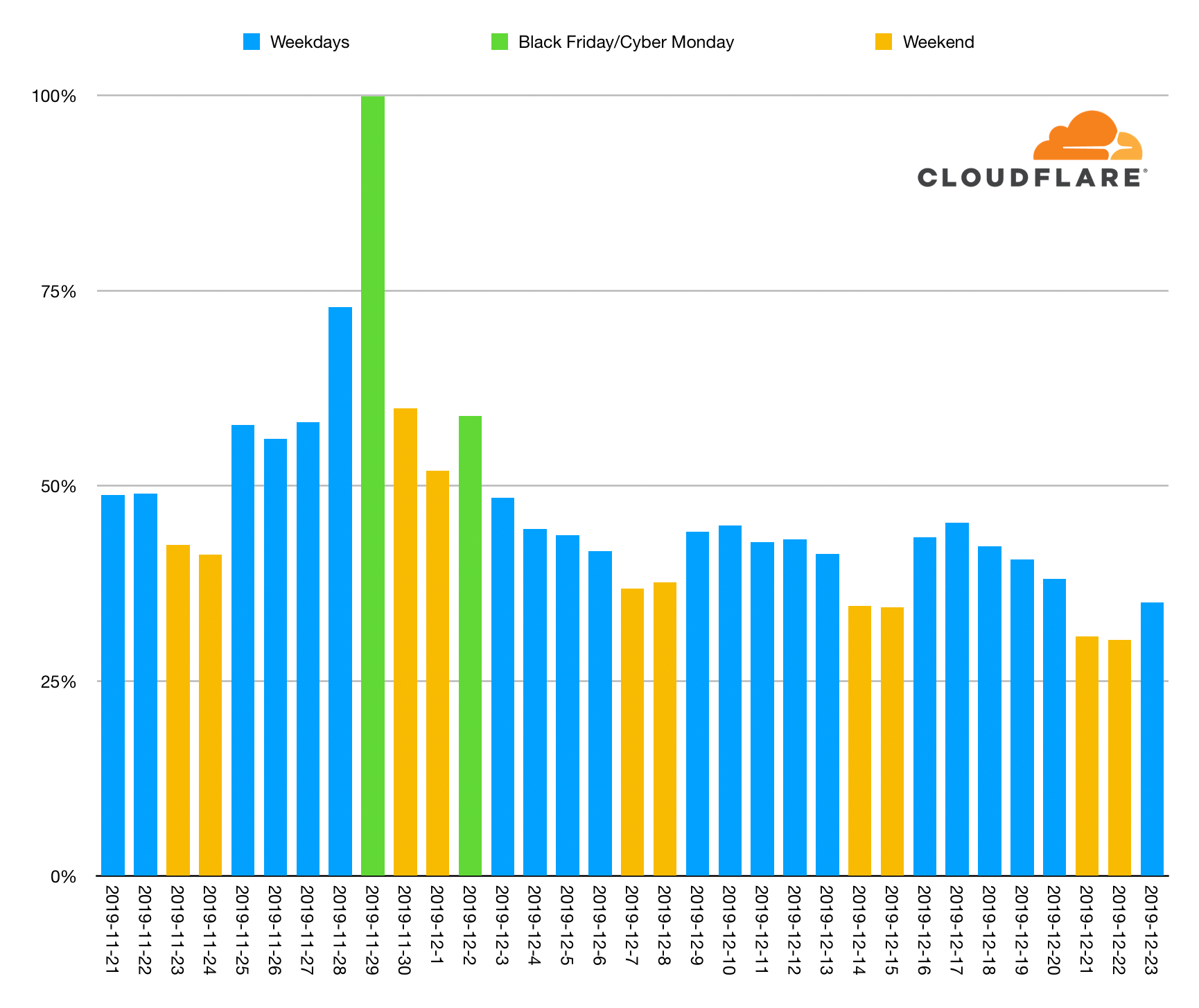
What’s the biggest day of the holiday season for holiday shopping? Black Friday, the day after US Thanksgiving, has been embraced globally as the day retail stores announce their sales. But it was believed that the following Monday, dubbed “Cyber Monday,” may be even bigger. Or, with the explosion of reliable 2-day and even 1-day shipping, maybe another day closer to Christmas has taken the crown. At Cloudflare, we aimed to answer this question for the 2019 holiday shopping season.
Black Friday was the biggest online shopping day but the second biggest wasn't Cyber Monday... it was Thanksgiving Day itself (the day before Black Friday!). Cyber Monday was the fourth biggest day.
Here's a look at checkout events seen across Cloudflare's network since before Thanksgiving in the US.

The weekends are shown in yellow and Black Friday and Cyber Monday are shown in green. You can see that checkouts ramped up during Thanksgiving week and then continued through the weekend into Cyber Monday.
Black Friday had twice the number of checkouts as the preceding Friday and the entire Thanksgiving week dominates. Post-Cyber Monday, no day reached 50% of the Continue reading
First Half 2019 Transparency Report and an Update on a Warrant Canary

Today, we are releasing Cloudflare’s transparency report for the first half of 2019. We recognize the importance of keeping the reports current, but It’s taken us a little longer than usual to put it together. We have a few notable updates.

Pulling a warrant canary
Since we issued our very first transparency report in 2014, we’ve maintained a number of commitments - known as warrant canaries - about what actions we will take and how we will respond to certain types of law enforcement requests. We supplemented those initial commitments earlier this year, so that our current warrant canaries state that Cloudflare has never:
- Turned over our encryption or authentication keys or our customers' encryption or authentication keys to anyone.
- Installed any law enforcement software or equipment anywhere on our network.
- Terminated a customer or taken down content due to political pressure*
- Provided any law enforcement organization a feed of our customers' content transiting our network.
- Modified customer content at the request of law enforcement or another third party.
- Modified the intended destination of DNS responses at the request of law enforcement or another third party.
- Weakened, compromised, or subverted any of its encryption at the request of law Continue reading
An Update on CDNJS

When you loaded this blog, a file was delivered to your browser called jquery-3.2.1.min.js. jQuery is a library which makes it easier to build websites, and was at one point included on as many as 74.1% of all websites. A full eighteen million sites include jQuery and other libraries using one of the most popular tools on Earth: CDNJS. Beginning about a month ago Cloudflare began to take a more active role in the operation of CDNJS. This post is here to tell you more about CDNJS’ history and explain why we are helping to manage CDNJS.
What CDNJS Does
Virtually every site is composed of not just the code written by its developers, but also dozens or hundreds of libraries. These libraries make it possible for websites to extend what a web browser can do on its own. For example, libraries can allow a site to include powerful data visualizations, respond to user input, or even get more performant.
These libraries created wondrous and magical new capabilities for web browsers, but they can also cause the size of a site to explode. Particularly a decade ago, connections were not always fast enough Continue reading
Announcing the CSAM Scanning Tool, Free for All Cloudflare Customers

Two weeks ago we wrote about Cloudflare's approach to dealing with child sexual abuse material (CSAM). We first began working with the National Center for Missing and Exploited Children (NCMEC), the US-based organization that acts as a clearinghouse for removing this abhorrent content, within months of our public launch in 2010. Over the last nine years, our Trust & Safety team has worked with NCMEC, Interpol, and nearly 60 other public and private agencies around the world to design our program. And we are proud of the work we've done to remove CSAM from the Internet.
The most repugnant cases, in some ways, are the easiest for us to address. While Cloudflare is not able to remove content hosted by others, we will take steps to terminate services to a website when it becomes clear that the site is dedicated to sharing CSAM or if the operators of the website and its host fail to take appropriate steps to take down CSAM content. When we terminate websites, we purge our caches — something that takes effect within seconds globally — and we block the website from ever being able to use Cloudflare's network again.
Addressing the Hard Cases
How we used our new GraphQL Analytics API to build Firewall Analytics
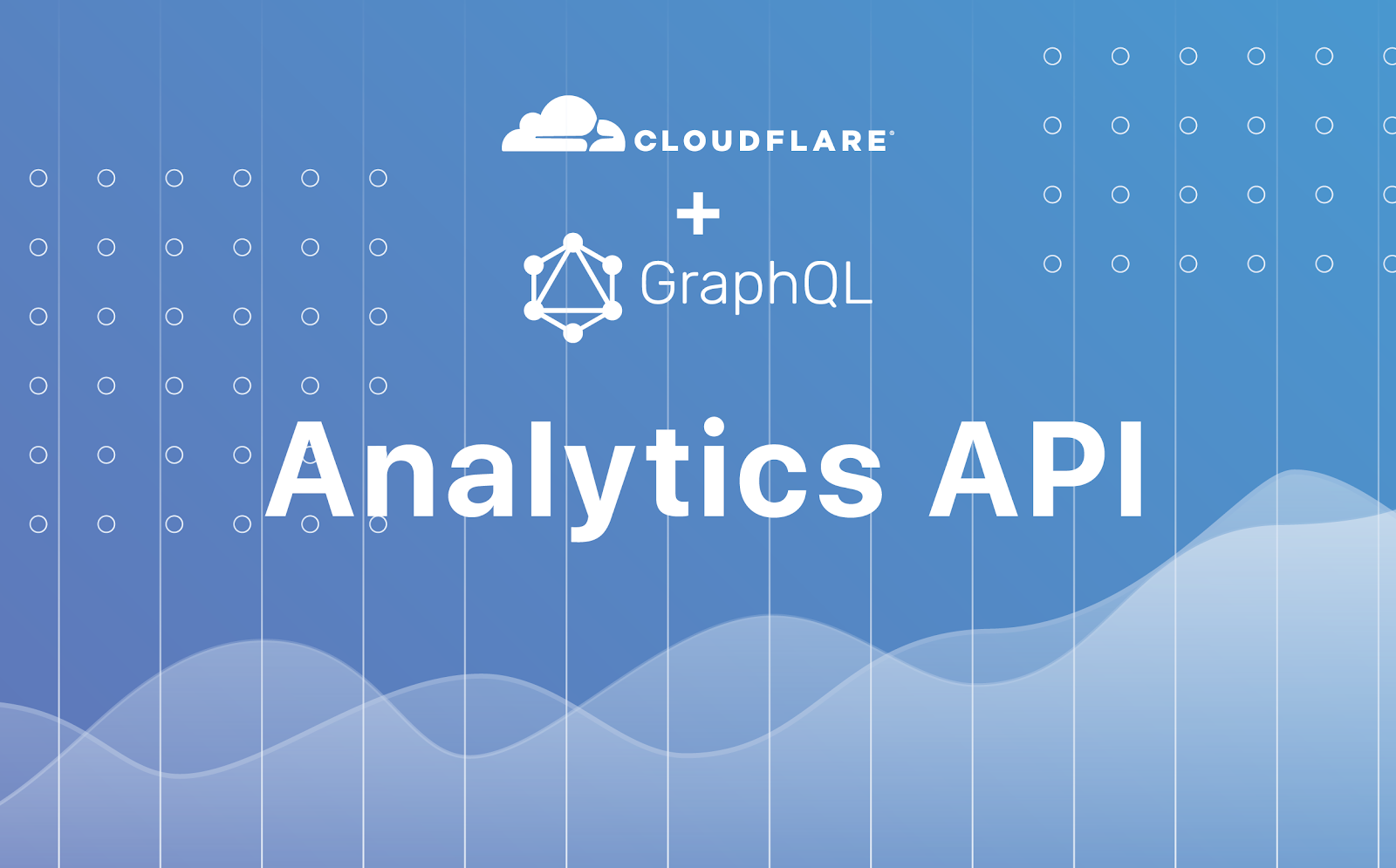
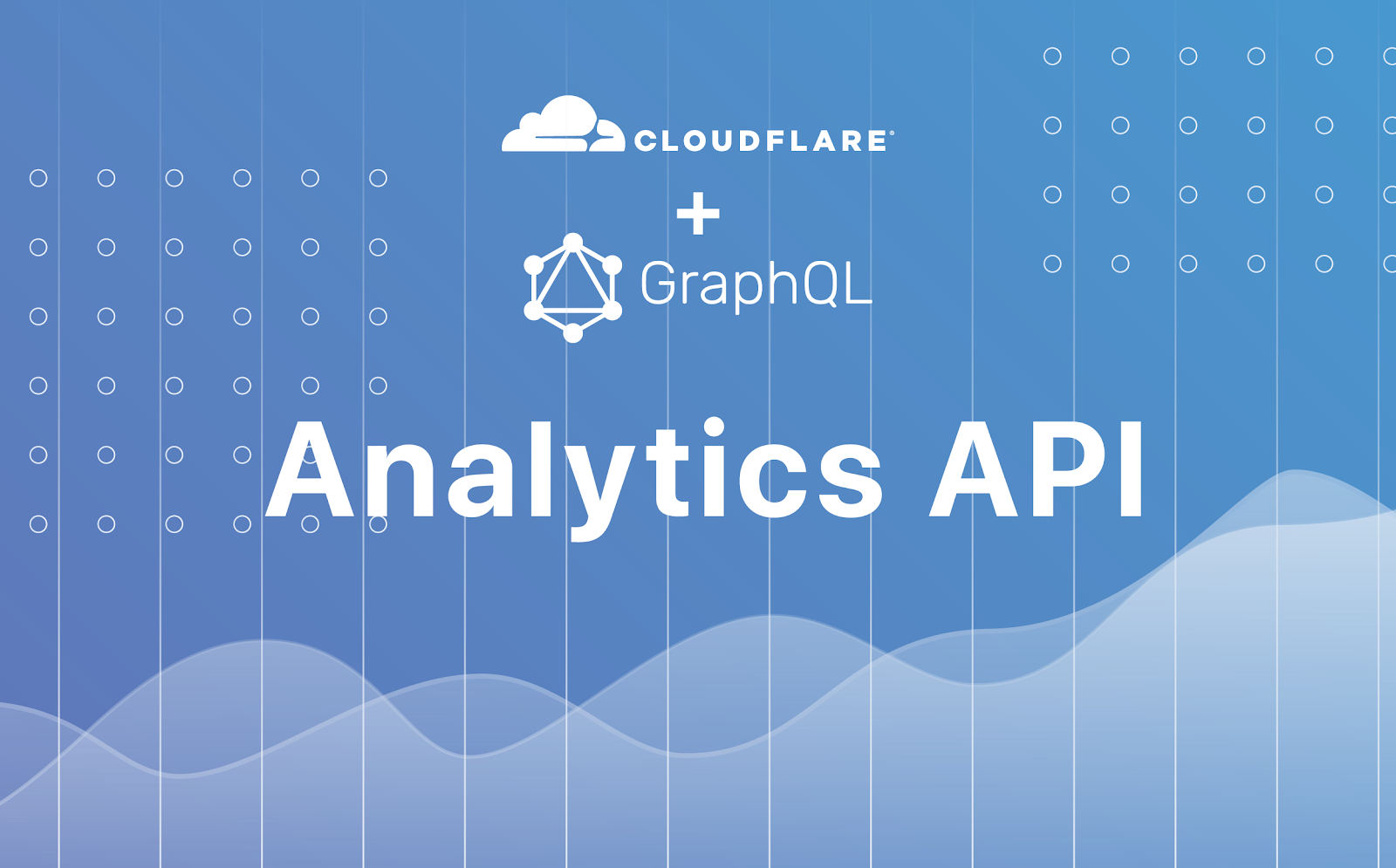
Firewall Analytics is the first product in the Cloudflare dashboard to utilize the new GraphQL Analytics API. All Cloudflare dashboard products are built using the same public APIs that we provide to our customers, allowing us to understand the challenges they face when interfacing with our APIs. This parity helps us build and shape our products, most recently the new GraphQL Analytics API that we’re thrilled to release today.
By defining the data we want, along with the response format, our GraphQL Analytics API has enabled us to prototype new functionality and iterate quickly from our beta user feedback. It is helping us deliver more insightful analytics tools within the Cloudflare dashboard to our customers.
Our user research and testing for Firewall Analytics surfaced common use cases in our customers' workflow:
- Identifying spikes in firewall activity over time
- Understanding the common attributes of threats
- Drilling down into granular details of an individual event to identify potential false positives
We can address all of these use cases using our new GraphQL Analytics API.
GraphQL Basics
Before we look into how to address each of these use cases, let's take a look at the format of a GraphQL query and how our Continue reading
Introducing the GraphQL Analytics API: exactly the data you need, all in one place

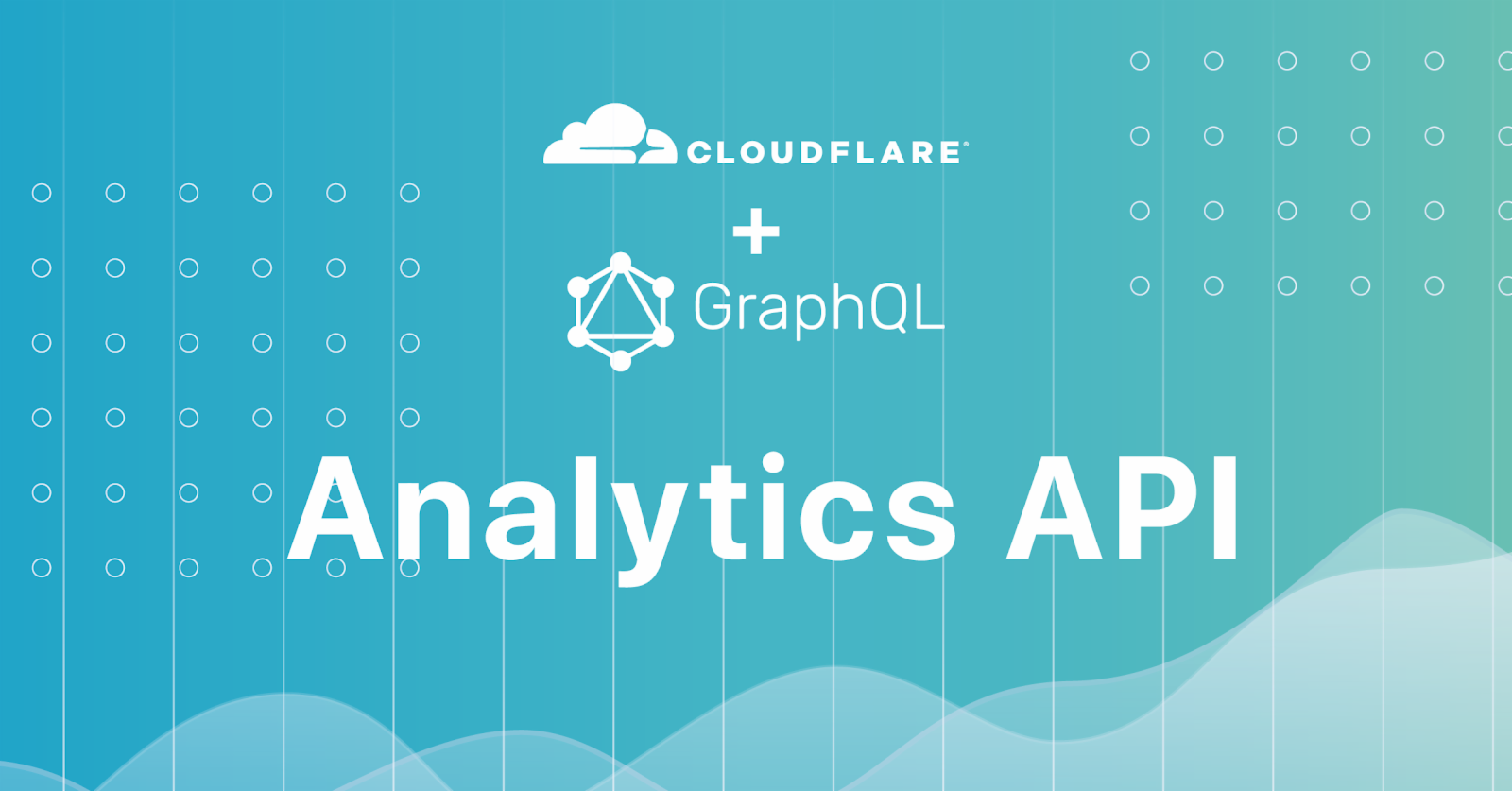
Today we’re excited to announce a powerful and flexible new way to explore your Cloudflare metrics and logs, with an API conforming to the industry-standard GraphQL specification. With our new GraphQL Analytics API, all of your performance, security, and reliability data is available from one endpoint, and you can select exactly what you need, whether it’s one metric for one domain or multiple metrics aggregated for all of your domains. You can ask questions like “How many cached bytes have been returned for these three domains?” Or, “How many requests have all the domains under my account received?” Or even, “What effect did changing my firewall rule an hour ago have on the responses my users were seeing?”
The GraphQL standard also has strong community resources, from extensive documentation to front-end clients, making it easy to start creating simple queries and progress to building your own sophisticated analytics dashboards.
From many APIs...
Providing insights has always been a core part of Cloudflare’s offering. After all, by using Cloudflare, you’re relying on us for key parts of your infrastructure, and so we need to make sure you have the data to manage, monitor, and troubleshoot your website, Continue reading
New tools to monitor your server and avoid downtime
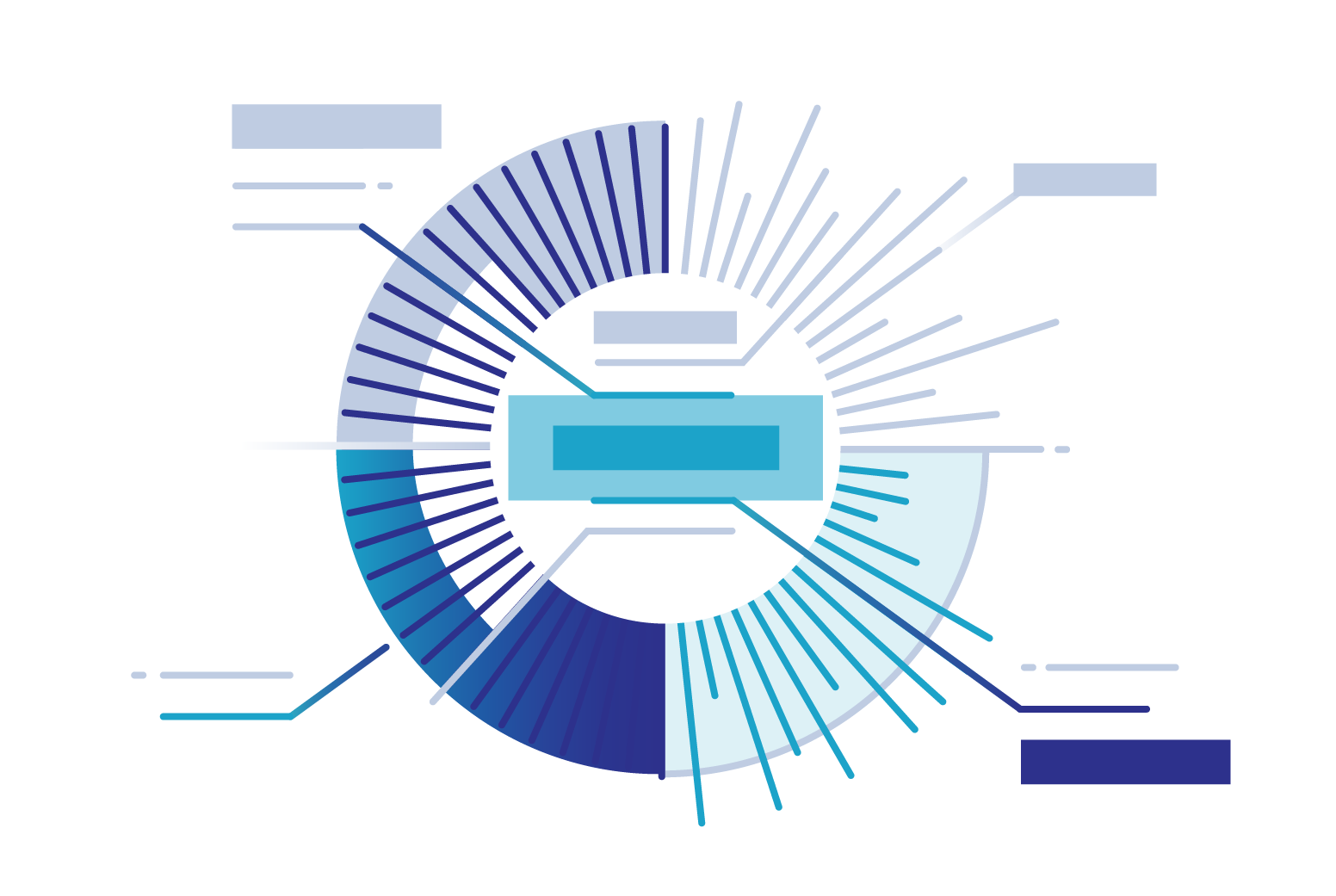
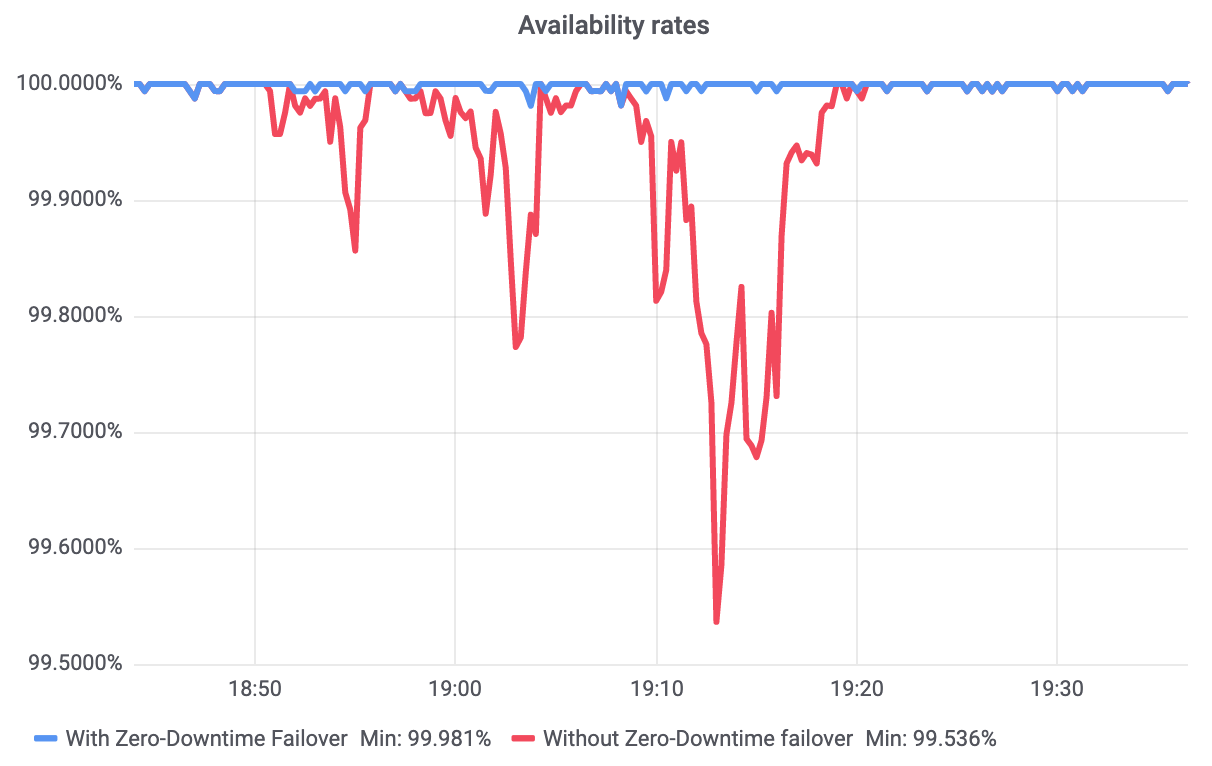
When your server goes down, it’s a big problem. Today, Cloudflare is introducing two new tools to help you understand and respond faster to origin downtime — plus, a new service to automatically avoid downtime.
The new features are:
- Standalone Health Checks, which notify you as soon as we detect problems at your origin server, without needing a Cloudflare Load Balancer.
- Passive Origin Monitoring, which lets you know when your origin cannot be reached, with no configuration required.
- Zero-Downtime Failover, which can automatically avert failures by retrying requests to origin.
Standalone Health Checks
Our first new tool is Standalone Health Checks, which will notify you as soon as we detect problems at your origin server -- without needing a Cloudflare Load Balancer.
A Health Check is a service that runs on our edge network to monitor whether your origin server is online. Health Checks are a key part of our load balancing service because they allow us to quickly and actively route traffic to origin servers that are live and ready to serve requests. Standalone Health Checks allow you to monitor the health of your origin even if you only have one origin or do not yet Continue reading
The Two-Year Anniversary of The Athenian Project: Preparing for the 2020 Elections.
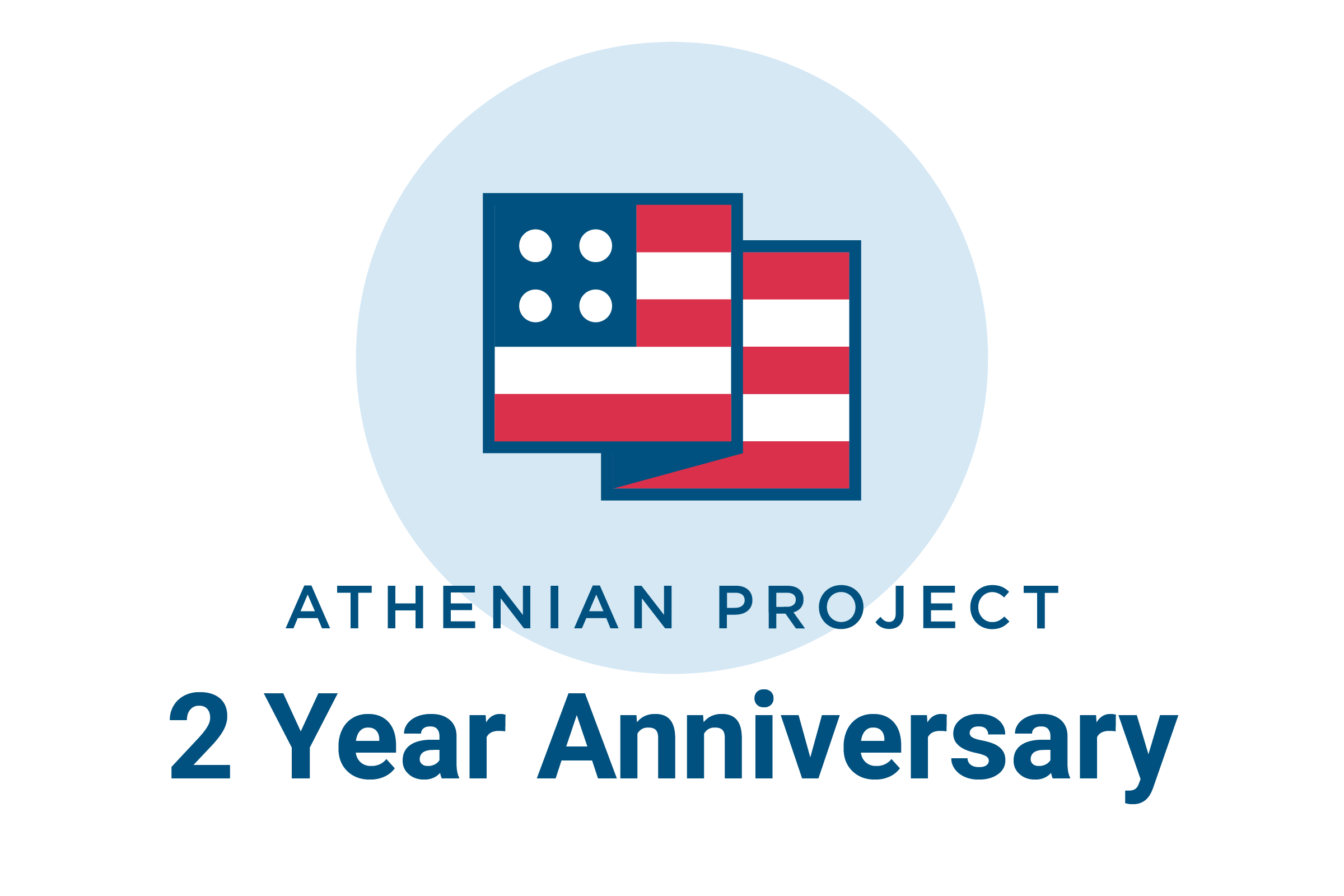
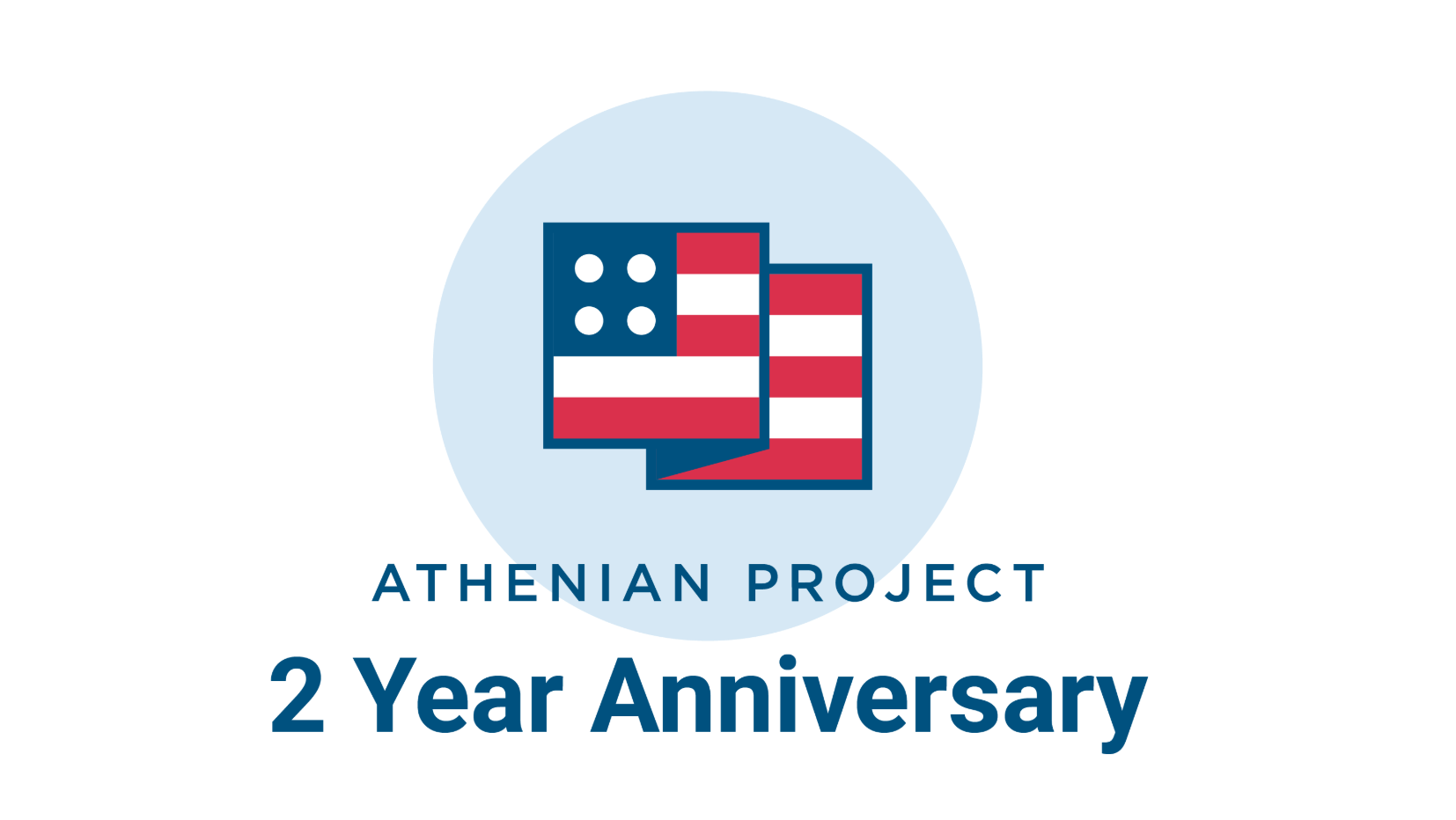
Two years ago, Cloudflare launched its Athenian Project, an effort to protect state and local government election websites from cyber attacks. With the two-year anniversary and many 2020 elections approaching, we are renewing our commitment to provide Cloudflare’s highest level of services for free to protect election websites and ensure the preservation of these critical infrastructure sites. We started the project at Cloudflare as it directly aligns with our mission: to help build a better Internet. We believe the Internet plays a helpful role in democracy and ensuring constituents’ right to information. By helping state and local government election websites, we ensure the protection of voters’ voices, preserve citizens’ confidence in the democratic process, and enhance voter participation.
We are currently helping 156 local or state websites in 26 states to combat DDoS attacks, SQL injections, and many other hostile attempts to threaten their operations. This is an additional 34 domains in states like Ohio, Florida, Kansas, South Carolina and Wisconsin since we reported statistics after last year’s election.
The need for security protection of critical election infrastructure is not new, but it is in the spotlight again as the 2020 U.S. elections approach, with the President, 435 seats Continue reading
Introducing Load Balancing Analytics


Cloudflare aspires to make Internet properties everywhere faster, more secure, and more reliable. Load Balancing helps with speed and reliability and has been evolving over the past three years.
Let’s go through a scenario that highlights a bit more of what a Load Balancer is and the value it can provide. A standard load balancer comprises a set of pools, each of which have origin servers that are hostnames and/or IP addresses. A routing policy is assigned to each load balancer, which determines the origin pool selection process.
Let’s say you build an API that is using cloud provider ACME Web Services. Unfortunately, ACME had a rough week, and their service had a regional outage in their Eastern US region. Consequently, your website was unable to serve traffic during this period, which resulted in reduced brand trust from users and missed revenue. To prevent this from happening again, you decide to take two steps: use a secondary cloud provider (in order to avoid having ACME as a single point of failure) and use Cloudflare’s Load Balancing to take advantage of the multi-cloud architecture. Cloudflare’s Load Balancing can help you maximize your API’s availability for your new architecture. For example, you Continue reading
Firewall Analytics: Now available to all paid plans


Our Firewall Analytics tool enables customers to quickly identify and investigate security threats using an intuitive interface. Until now, this tool had only been available to our Enterprise customers, who have been using it to get detailed insights into their traffic and better tailor their security configurations. Today, we are excited to make Firewall Analytics available to all paid plans and share details on several recent improvements we have made.
All paid plans are now able to take advantage of these capabilities, along with several important enhancements we’ve made to improve our customers’ workflow and productivity.

Increased Data Retention and Adaptive Sampling
Previously, Enterprise customers could view 14 days of Firewall Analytics for their domains. Today we’re increasing that retention to 30 days, and again to 90 days in the coming months. Business and Professional plan zones will get 30 and 3 days of retention, respectively.
In addition to the extended retention, we are introducing adaptive sampling to guarantee that Firewall Analytics results are displayed in the Cloudflare Dashboard quickly and reliably, even when you are under a massive attack or otherwise receiving a large volume of requests.
Adaptive sampling works similar to Netflix: when your internet connection runs low Continue reading
Announcing deeper insights and new monitoring capabilities from Cloudflare Analytics


This week we’re excited to announce a number of new products and features that provide deeper security and reliability insights, “proactive” analytics when there’s a problem, and more powerful ways to explore your data.
If you’ve been a user or follower of Cloudflare for a little while, you might have noticed that we take pride in turning technical challenges into easy solutions. Flip a switch or run a few API commands, and the attack you’re facing is now under control or your site is now 20% faster. However, this ease of use is even more helpful if it’s complemented by analytics. Before you make a change, you want to be sure that you understand your current situation. After the change, you want to confirm that it worked as intended, ideally as fast as possible.
Because of the front-line position of Cloudflare’s network, we can provide comprehensive metrics regarding both your traffic and the security and performance of your Internet property. And best of all, there’s nothing to set up or enable. Cloudflare Analytics is automatically available to all Cloudflare users and doesn’t rely on Javascript trackers, meaning that our metrics include traffic from APIs and bots and are not skewed Continue reading
Cloudflare’s Response to CSAM Online

Responding to incidents of child sexual abuse material (CSAM) online has been a priority at Cloudflare from the beginning. The stories of CSAM victims are tragic, and bring to light an appalling corner of the Internet. When it comes to CSAM, our position is simple: We don’t tolerate it. We abhor it. It’s a crime, and we do what we can to support the processes to identify and remove that content.
In 2010, within months of Cloudflare’s launch, we connected with the National Center for Missing and Exploited Children (NCMEC) and started a collaborative process to understand our role and how we could cooperate with them. Over the years, we have been in regular communication with a number of government and advocacy groups to determine what Cloudflare should and can do to respond to reports about CSAM that we receive through our abuse process, or how we can provide information supporting investigations of websites using Cloudflare’s services.
Recently, 36 tech companies, including Cloudflare, received this letter from a group of U.S Senators asking for more information about how we handle CSAM content. The Senators referred to influential New York Times stories published in late September and early November Continue reading
Thinking about color
Color is my day-long obsession, joy and torment - Claude Monet


Over the last two years we’ve tried to improve our usage of color at Cloudflare. There were a number of forcing functions that made this work a priority. As a small team of designers and engineers we had inherited a bunch of design work that was a mix of values built by multiple teams. As a result it was difficult and unnecessarily time consuming to add new colors when building new components.
We also wanted to improve our accessibility. While we were doing pretty well, we had room for improvement, largely around how we used green. As our UI is increasingly centered around visualizations of large data sets we wanted to push the boundaries of making our analytics as visually accessible as possible.
Cloudflare had also undergone a rebrand around 2016. While our marketing site had rolled out an updated set of visuals, our product ui as well as a number of existing web properties were still using various versions of our old palette.
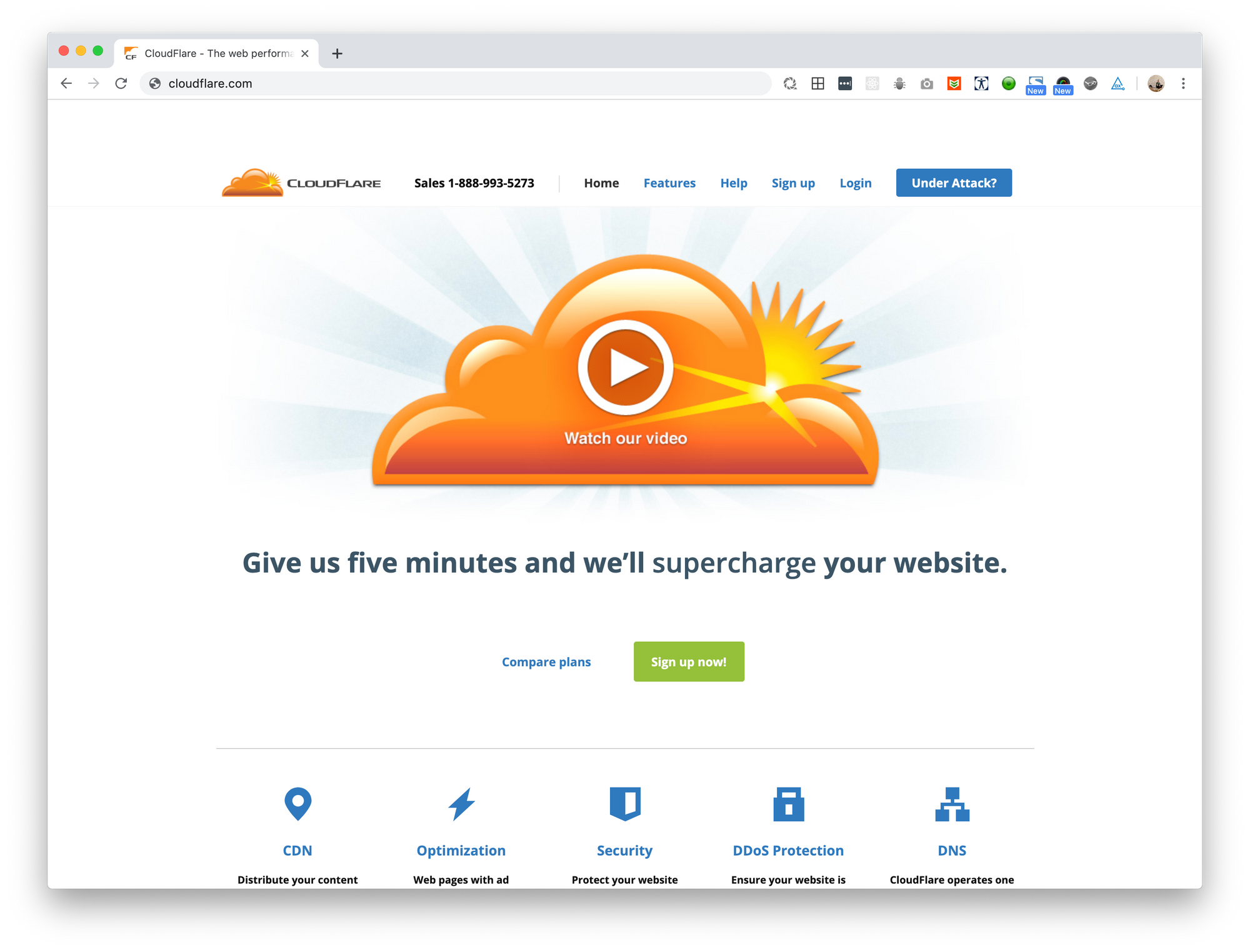
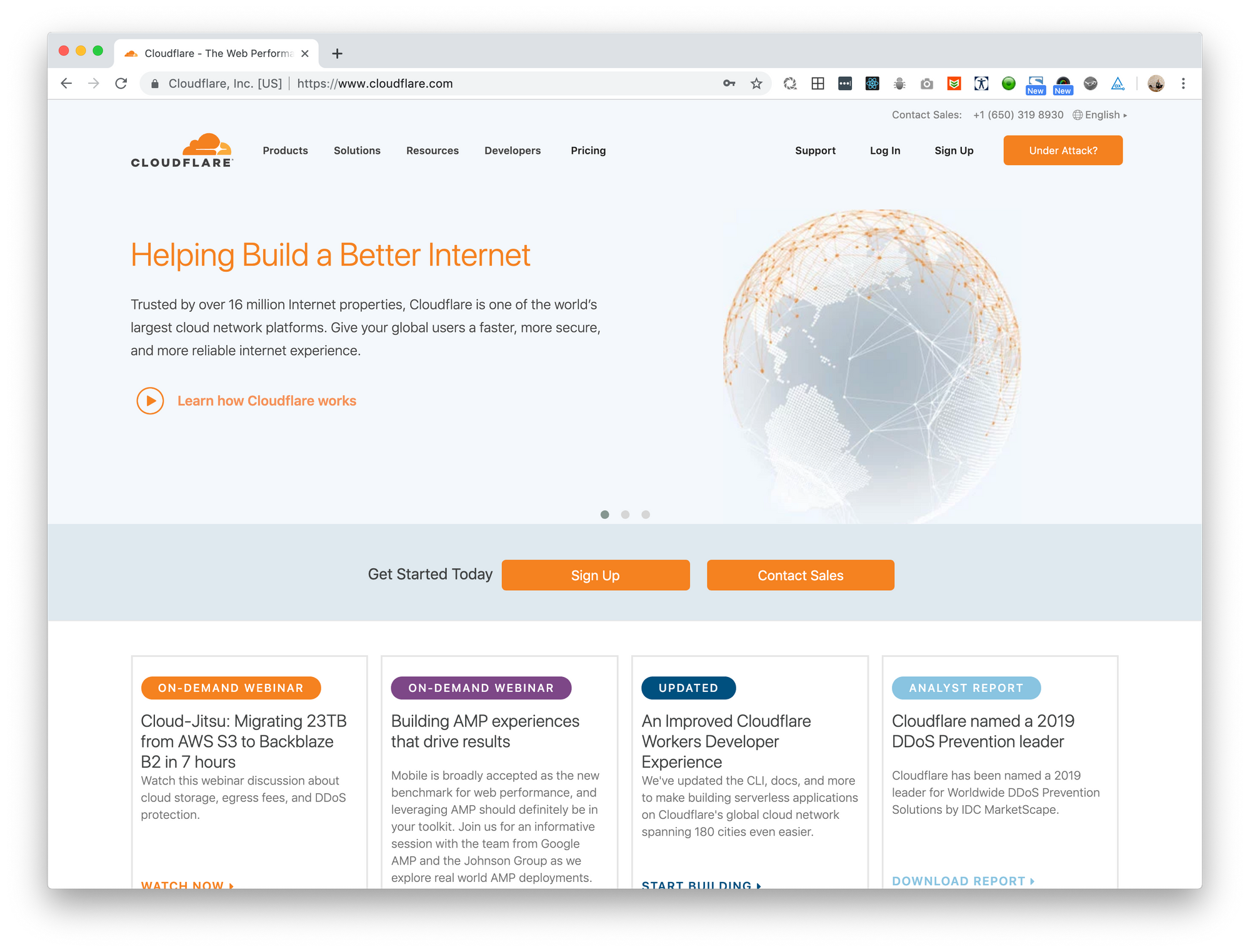
Our product palette wasn’t well balanced by itself. Many colors had been chosen one or two Continue reading